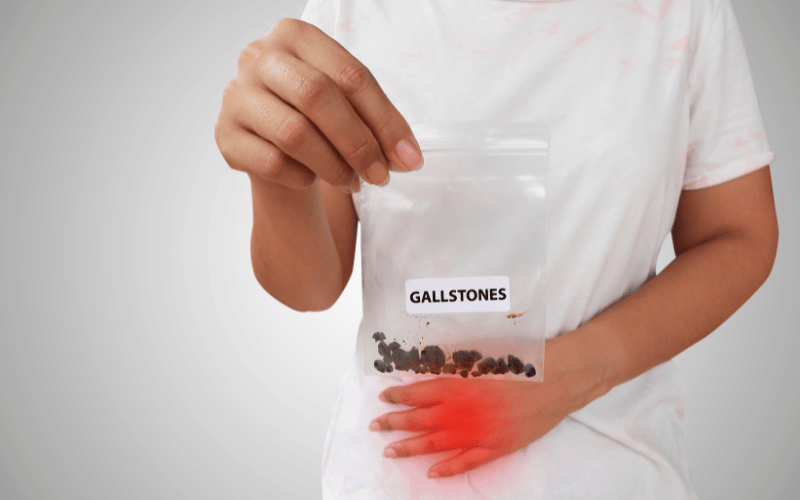Introduction: Unraveling the Mystery of Gallstones Symptoms
Gallstones, those stealthy, often unnoticed accumulations in the gallbladder, can be a source of significant discomfort and health complications. These small, hard deposits form from cholesterol or bilirubin in the bile and vary in size and number. While some individuals may carry gallstones without any apparent symptoms, for others, they can lead to acute and chronic health issues. Understanding the diverse array of symptoms associated with gallstones is essential for early detection and effective management, potentially averting more serious health conditions.

The onset of gallstone symptoms can be sudden and severe or gradual and mild, making it challenging to recognize them early. The most common and telltale symptom is a pain in the upper right abdomen, often described as a sharp, cramping pain that may radiate to the back or shoulder. This pain, typically occurring after meals, especially those high in fat, can last from a few minutes to several hours. However, not all gallstone symptoms are as obvious or specific, and they can easily be mistaken for other gastrointestinal issues.
Recognizing these symptoms is vital, not just for comfort but for overall health. Gallstones can lead to complications such as inflammation of the gallbladder (cholecystitis), blockages in the bile ducts (choledocholithiasis), or even pancreatitis, an inflammation of the pancreas. These conditions require immediate medical attention and highlight the importance of being attuned to the signs your body may be sending.
As we explore the various symptoms of gallstones in this article, our goal is to provide you with a clear understanding of what to look out for and when to seek medical advice. Early detection and proper management of gallstones can significantly improve health outcomes and prevent long-term complications, underscoring the importance of being knowledgeable about your body’s signals.
1. Abdominal Pain: A Hallmark of Gallstones

Abdominal pain associated with gallstones is a primary symptom that varies greatly among individuals. Typically, this pain occurs in the upper right part of the abdomen and can range from a mild discomfort to an intense, sharp pain. The nature of the pain is often described as a deep ache or a sudden sharp spasm. This pain commonly occurs post-meal, especially after consuming high-fat foods, as the gallbladder contracts to release bile.
The timing of this pain is often unpredictable, occurring primarily at night or in the early morning hours, sometimes waking the individual from sleep. The duration of the pain can vary significantly, lasting from a few minutes to several hours. This sporadic nature can sometimes lead to delays in seeking medical attention, as it might be mistaken for indigestion or muscle strain.
In many cases, the pain doesn’t remain localized but radiates to the back, particularly between the shoulder blades, or to the right shoulder. This radiating nature is a distinct feature of gallstone-related discomfort and helps in differentiating it from other types of abdominal pain.
Alongside this primary symptom, other digestive disturbances such as nausea or vomiting are often present. This combination of symptoms can complicate the eating experience, making meals an event of apprehension.
The unpredictability of gallstone pain, both in timing and intensity, can significantly impact an individual’s quality of life. It creates anxiety around meals and disrupts sleep, adding to the burden of the condition. Understanding this primary symptom of gallstones is crucial for individuals to recognize the potential need for a medical evaluation. (1)